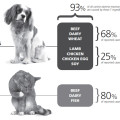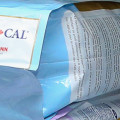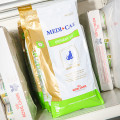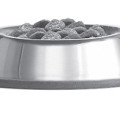There is an abundance of unsubstantiated information regarding alternative foods for pets available to the public via the Internet and other sources. However, pet owners should be aware of the facts if they are considering an alternative food for their pet.
BARF formula (Bones And Raw Food)
- The BARF formula consists of a combination of raw meat, eggs, meaty bones and vegetables
- There is no scientifi c data to support beliefs commonly held by BARF supporters
- Some published BARF recipes contain excessive levels of Key Nutritional Factors such as protein, calcium and phosphorus for an adult dog or cat1
- Food poisoning and bacterial contamination are obvious safety hazards for not only pets eating raw foods but the humans handling raw foods as well2
- Pets eating BARF or other raw food formulas are at an increased risk for intestinal obstruction, fractured teeth and gastrointestinal perforation3
Home-cooked pet meals
- In one study, 90% of homemade pet foods were found to be nutritionally unbalanced and incomplete for pets4
- Pet owners and pets may be exposed to dangerous bacteria such as salmonella and listeria harboured by raw or insuffi ciently cooked meat5
- Pet owners may assume dogs and cats require the same nutrition as humans and provide improper levels of multiple nutrients6
- Homemade meals can contain an inverse calcium and phosphorus ratio dangerous to pets7
A WORD ABOUT PRESERVATIVES
Preservatives are ingredients used in pet food to prevent spoilage and rancidity. Here are the facts about preservatives commonly found in commercially manufactured pet foods:
- BHA and BHT are examples of synthetic antioxidant preservatives approved by the Canadian Food Inspection Agency (part of Health Canada) when used at recommended levels
- Many human foods, such as bread, cheese, margarine, potato chips, meat, and frozen and dried fruits, contain BHA and BHT
- Natural preservatives include tocopherols (vitamin E), spice extracts and citric acid
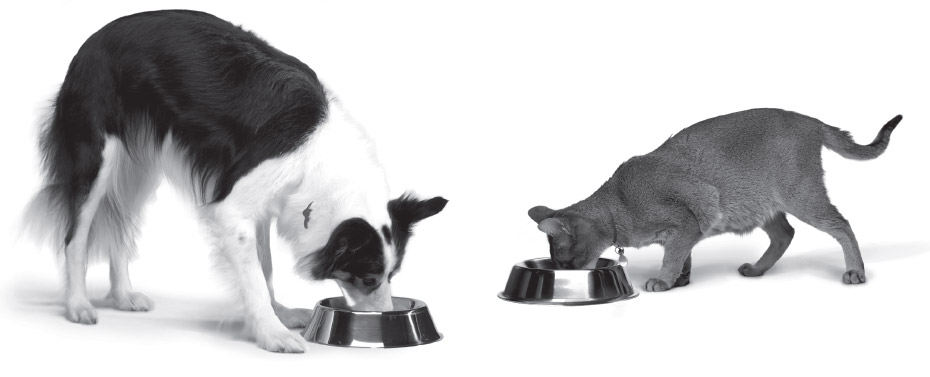
1 Billinghurst I. Give Your Dog a Bone. Alexandria, Australia: Bridge Printery, 1993. Schultze KR
2 Freeman LM, Michel KE. Evaluation of raw food diets for dogs. J Am Vet Med Assoc 2001; 218:705-709, 1553-1554 and 1716. Miller EP, Cullor JS. Food safety. Small Animal Clinical Nutrition, 4th edition, pages 184-198
3 Joffe DJ, Schlesinger DP. Preliminary assessment of the risk of salmonella infection in dogs fed raw chicken diets. Canadian Veterinary Journal, June 2002; 43(6):441-2
4 Small Animal Clinical Nutrition, 4th edition, page 169
5 Small Animal Clinical Nutrition, 4th edition, page 170
6 Small Animal Clinical Nutrition, 4th edition, page 170. Septicemic Salmonellosis in Two Cats Fed a Raw-Meat Diet. J Am Anim Hosp Assoc 2003; 39:538-542. Public health concerns associated with feeding raw meat diets to dogs. J Am Vet Med Assoc 2001; 291:1222-1225
7 Small Animal Clinical Nutrition, 4th edition, page 170



